Audi Q3 Review 2025
Audi Q3 At A Glance
It's round three for the Audi Q3, which is aiming to be the poshest of all the small SUVs. It's certainly the priciest but is the premium over the closely related Volkswagen T-Roc really worth it? Find out with our full Audi Q3 review.
The original Audi Q3 was just fine. Certainly far from Audi's best at the time, but not a bad car either. The next-generation one made improvements pretty much across the board, but you can't rest on your laurels in this cut-throat part of the market. And so, seven years on from first going into production, the second-generation Q3 has made way for an all-new version.
Yes, this definitely is an all-new car rather than a heavy facelift, although we'd forgive you for thinking the latter because it's certainly not radically different. We think it's an improvement, though. It's a handsome thing and we reckon the shape of this SUV works better than the coupe-esque Audi Q3 Sportback we've reviewed separately.
Beauty is in the eye of the beholder, but we'd pocket the £1500 premium charged for the Sportback and stick with the marginally more practical Q3 SUV. And as for the illuminated Audi rings logo at the rear of all but the Sport specification models, we're really not sure about that.
The latest Audi Q3 is slightly longer than the last one, so it's puzzling to learn that the boot space has dropped by up to 100 litres, depending on how the individually sliding and reclining rear seats are configured. It's good to see this feature carried over from the previous Q3 because it was one of the most appealing things about it.
Something else we're happy to see is the inclusion of a diesel engine, when many manufacturers are swiftly moving away from the fuel. It still works well for a lot of people and thanks to a trio of petrol options and a plug-in hybrid, Audi has covered all bases. Well, speed freaks might be left wanting — it's unclear if the rapid RS Q3 will return. That was a niche model, though, so few are likely to be bothered about whether or not it comes back.
Of more importance will be how good the bread and butter models are, but unfortunately, it's a bit of a mixed bag. The interior quality in the Q3 isn't as plush as we've come to expect from Audi and the ride is disappointingly firm. The strange new steering column-mounted devices that are used for the indicators, wipers and drive selection is also a weird choice.
All of this is a problem for the Audi Q3, with no shortage of rivals in the premium small SUV sphere. The BMW X1 is an excellent alternative that's better to drive and feels nicer inside plus its underpinnings are used for another rival in the form of the MINI Countryman.
While the Mercedes GLA is due for replacement in the short-term it still has plenty of appeal, particularly if you want to go fast thanks to the options of the AMG-tuned GLA 35 and the ballistic GLA 45 S.
There are plenty of posh options away from the German 'big three' as well. The Volvo XC40 is one, although it's even older than the Mercedes and is starting to slip behind fresher competition. The same could be said of the Range Rover Evoque, but as far as style goes it's the clear leader of the pack.
Finally, if those four rings aren't essential to you, the same platform, engines and a lot of the same technology can be found in the new Volkswagen T-Roc, which is set to cost a lot less than the Audi. For many, the presence of those four rings — illuminated or otherwise — will be a big part of the Q3's appeal, and the rest of the car will do just about enough to satisfy. We just wish the badge didn't have to do so much heavy lifting.
Audi Q3 handling and engines
Audi Q3 2025: Handling and ride quality
There's a firmness to the Audi Q3's ride that we weren't anticipating. It's not crashy but it never seems to settle down, with a constant jiggling even over smooth surfaces. Interestingly the range-topping TFSI 265PS quattro model, which has a different suspension tune, rides noticeably better than others, albeit still with a firm edge to proceedings.
The stiffness of the Q3's setup does at least mean there's very little body roll, all versions feeling very competent and stable when driven enthusiastically down a country road. The thing is, we just can't imagine that's of a particularly high priority to the average Audi Q3 driver, who would surely be happier having a bit more body roll in exchange for a greater level of ride comfort.
So far, we've only tried the Audi Q3 on the optional adaptive suspension, which even in its Comfort mode is firm. Switching to Sport can make it feel choppy on rougher roads.
All-wheel drive quattro models have vast amounts of traction, as you'd hope, with soaking wet roads being little bother. The e-hybrid models, which put a lot of power through their front wheels, have a habit of wheelspinning off the line even under partial throttle. There's even a bit of torque steer, where higher levels of power cause the steering to tug.
On that subject, Progressive Steering comes as standard on Edition 1 models and other Q3s with the Sound & Vision Pro pack fitted. A feature we've seen in various Volkswagen Group models before, this involves a variable-ratio steering rack, which gets progressively tighter the more you turn the wheel. It makes for quick steering, but it can take some getting used to.
At speed, the cabin is well-insulated from wind noise, but more tyre noise encroaches on the cabin than we'd like. The large wheels of the Audi Q3s we've tested so far didn't help, plus they have a habit of thumping noisily and uncomfortably over bigger road surface imperfections.

Audi Q3 2025: Engines
The Audi Q3 can be specced as either a petrol, diesel or plug-in hybrid.
There's a choice of three four-cylinder petrol engines — a 1.5-litre and a 2.0-litre unit in two states of tune. The former is simply labelled TFSI 150PS and produces 250Nm of torque, enabling 0-62mph in 9.1 seconds. It'll be fine for most, being smooth and relatively refined unless you're revving it high, at which point it is a little noisy.
First of the 2.0-litre petrols is the TFSI 204PS quattro, developing 320Nm. Most will be perfectly satisfied with the 7.1 seconds it takes to get from 0-62mph, but anyone wanting more can opt for the TFSI 265PS quattro version. It generates 400Nm and completes the same sprint in an impressive 5.7 seconds. It's smooth, impressively fast and makes a good noise, enabling the Q3 to feel almost like a hot hatch.
The e-hybrid 272PS blends the same 1.5-litre petrol engine mentioned above with an electric motor, the combination producing 400Nm of torque. It's the most powerful Q3, but not the fastest, thanks to the weight of its 19.7kWh net capacity battery pack. Still, a 0-62mph time of 6.8 seconds is not to be sniffed at.
The PHEV certainly feels fast, although there's quite a delay between putting your foot down and the car actually responding. If you're driving more gently, the transitions between power sources are fairly smooth.
The sole diesel engine is a 2.0-litre unit badged TDI 150PS — it produces 360Nm of torque for a 0-62mph time of 9.2 seconds. A decent torque output means you don't have to work it too hard to make progress, but it does feel sluggish, even compared with the slightly quicker 150PS petrol.
There's no manual gearbox this time around, with all versions using slick-shifting S Tronic dual-clutch automatic. The e-hybrid uses a six-speed version while the rest of the Q3s use a seven-speed unit. If you want a Q3 with quattro all-wheel drive, it has to be one of the 2.0-litre models. All other derivatives are front-wheel drive.
As for whether there'll be a new Audi RS Q3, we're not sure. — if there is, it would be unlikely to use the old version's punchy five-cylinder engine, given that isn't long for this world.
Audi Q3 2025: Safety
The latest Audi Q3 hasn't been crash-tested by Euro NCAP. Although this is no guarantee of the new version's performance, the previous one managed the full five stars, while all recent tests involving Audis have yielded the same rating.
As standard, there's a healthy level of safety systems, including something called Active Front Assist which provides 'evasion and turning assistance' should it need to. There's also front cross-traffic assist, a driver attention monitor, a 360-degree parking camera and lane assistance. A smarter driving assistance system including a lane-change assistance feature can be specced with the Enhanced Driving Comfort pack.
Audi Q3 2025: Towing
The Audi Q3's braked towing capacity varies by model.
Unsurprisingly, the TFSI 265PS quattro can haul the most at 2100kg, dropping to 2000kg for both the TDI 150PS and the TFSI 204PS quattro. The TFSI 150PS is rated at a maxmum of 1800kg, while 1400kg is the limit for the e-hybrid 272PS.
A mechanically swivelling tow ball is a £925 option.
Audi Q3 interior
Audi Q3 2025: Practicality
It's good to see that one of the previous Audi Q3's most useful features, its sliding and reclining rear seat bench, has been retained, though it's a shame that boot space has been reduced in the latest version. You used to get 675 litres with the bench slid all the way forwards and put in its most upright position, but it's now 575 litres. Rear legroom is extremely limited with the rear bench pushed all the way forward.
With the rear bench configured to maximise interior space, boot capacity is 488 litres, which is 42 litres less than in the previous Q3. Due to where the high-voltage battery sits, the e-hybrid can only carry 375 litres. With the rear seats folded there's a total volume of 1386 litres, reduced to 1293 litres in the e-hybrid.
To put all of the above in context, the BMW X1 has a 540-litre boot, expanding to 1600 litres, numbers which don't change if you spec it as a PHEV. Meanwhile, the Mercedes GLA can carry 485-495 litres seats-up and 1420-1430 litres seats-down, dropping to 445 litres and 1385 litres respectively for the plug-in hybrid.
Audi has moved the Q3's drive selector to a new unit that's part of the steering column, replacing traditional indicator and wiper stalks in the process. This is supposed to make room for a bigger centre console storage bin, although it's not like the space under the sliding lid is cavernous, plus the new indicator and wiper controls are downright difficult to use.
The indicators don't feel like they're in a particularly natural place to operate, while having a rotary dial for the wipers is an odd choice. You do start to get used to it in time but we can't help but feel it's an answer to a question no one asked. After all, Mercedes manages to have a column-mounted shifter in most of its cars, merely combining the indicator stalk with windscreen wiper controls.

Audi Q3 2025: Quality and finish
This is the most disappointing aspect of the latest Audi Q3 but we'll start with the more positive elements. There's a soft-touch upper dashboard surface and the fabric-clad sections of the inner door panels are a nice touch.
The metal-effect trim cladding the middle part of the dashboard looks and feels cheap, as does the plastic used for the rest of the dash. Everything feels put together well, with no build quality issues spotted in any of the Audi Q3s we've tried so far.
Some models also replace that metal-look trim for a wood veneer, which looks and feels far classier.
Audi Q3 2025: Infotainment
Regardless of trim level, every Audi Q3 has a large, curved panel housing both an 11.8-inch digital instrument cluster and a 12.8-inch touchscreen infotainment system.
It runs on Google Automotive OS, allowing you to download and use your favourite supported apps directly on the system rather than streamed from your smartphone. Given that no OEM navigation system is as good as Google Maps, this makes a lot of sense. You can also download Spotify for music streaming and YouTube to use when stationary, obviously.
The screen responds well to touch, but the visuals are all aggressively grey. Would a splash of colour be so much to ask?
Also, the instrument cluster is extremely shallow, making it look odd in that massive curved housing, surrounded by vast swathes of black. Its ultra-widescreen layout means that although you can have the navigation in the instrument cluster, the view of the map isn't hugely useful.
Upgrading to the Sound & Vision pack brings with it a 420-watt, 12-speaker Sonos surround sound system, but it's only available on S Line and Edition 1 Audi Q3s. It has decent clout and clarity, but you don't hear the benefit as much when listening to DAB radio, the sound quality of which seems noticeably worse here than when using a music streaming service.
Audi Q3 value for money
Audi Q3 2025: Prices
Prices for the Audi Q3 start at £38,300 for the TFSI 150PS Sport. It's £41,100 if you want that same engine with the S Line trim and £44,650 in the loaded-up Edition 1 grade. Prices for the TFSI 204PS quattro range from £42,000 to £48,350 depending on trim level, while the 265PS version isn't available in Sport, so you're looking at £48,900 for the S Line version or £52,450 for an Edition 1, making the latter the most expensive version of the Q3.
Audi Q3 TDI 150PS prices go from £40,000 to £46,350, with the PHEV e-hybrid 272PS ocsting £45,800 to £51,350. If you're eying up the Sportback, you'll need to add £1500 to any of the above.
Even before you do that, the Audi Q3 looks on the pricier side when the starting point for a BMW X1 is about £1000 less, and when the least expensive Mercedes GLA is more like £2000 cheaper. Also, few will pay any of those standard prices we've listed, with Audi offering an extensive array of optional extras, including the up to £4,550 Sound & Vision Pro pack, to bump things up further.

Audi Q3 2025: Running Costs
Given the way the current WLTP testing method flatters plug-in hybrids it's no surprise to see that, according to official figures, the Audi Q3 e-hybrid is by far the most economical, apparently returning 132.5-161.9mpg, depending on the trim level.
The real fuel economy of such cars varies wildly depending on numerous factors, so it's not worth paying much attention to that figure. The thing is, with a 66-73-mile range — more like 50-60 in real-world driving situations — many journeys can be completed without waking up the engine at all.
Q3 e-hybrids also ake for affordable company cars thanks to their low Benefit-in-Kind (BiK) tax rate of 6% or 9%, depending on the final specification of the car.
For more consistent economy, look no further than the Audi Q3 TDI 150PS with its 48.9-52.7mpg official capability. The TFSI 150PS petrol does well for itself too, offering 43.0-46.5mpg. The 2.0-litre engine is only worth considering if you can stomach the fuel bills — the TFSI 204PS quattro version manages 33.7-36.1mpg while the TFSI 265PS quattro is only good for 31.5-33.1mpg.
There's no longer the £10 discount for lower emissions car, so you'll be paying the same £195 annually for Vehicle Excise Duty (VED or car tax) whether you have a plug-in hybrid, petrol or diesel Q3.
Only the TFSI 150PS Sport sneaks under the £40,000 Expensive Car Supplement — the so-called premium car tax — threshold, and not by much, so a few options in the configurator could be enough to nudge it over, landing yourself with a £425 annual surcharge from years two to six.
Satisfaction Index
 What is your car like to live with?
What is your car like to live with?
We need your help with our latest Satisfaction Index, so that we can help others make a smarter car buying decision. What's it like to live with your car? Love it? Loath it? We want to know. Let us know about your car - it will only take a few minutes and you could be helping thousands of others.
Help us with the Honest John Satisfaction Index nowAudi Q3 models and specs
The Audi Q3 is available in three trim levels — Sport, S Line and Edition 1 — although the TFSI 265PS quattro is only available in the latter two.
The Audi Q3 Sport includes:
- 18-inch alloy wheels
- LED front and rear lights
- Heated and electrically adjustable/folding mirrors with auto-dimming
- 12-8-inch infotainment touchscreen
- 11.9-inch digital instrument cluster
- Wireless smartphone charging
- Intrior ambient lighting
- Leather steering wheel
- Tri-zone climate control
The Audi Q3 S Line adds the following equipment:
- 19-inch alloy wheels
- Upgraded LED light clusters with selectable light signatures
- Illuminated rear Audi logo
- Half-leather/half-synthetic leather interior
- Flat-bottomed steering wheel
- Enhanced interior ambient lighting
The Audi Q3 Edition 1 trim adds:
- 20-inch alloy wheels
- Black exterior styling features
- Matrix LED headlights
- Progressive Steering
- Heated steering wheel
- Microfibre upholstery
- Additional safety equipment
- Dynamic package (sports suspension, engine sound enhancement and red brake calipers)
Model History
September 2025
Audi Q3 preview
New Audi SUVs seem to crop up as frequently as social media links to online Dubai chocolate emporia and supposedly shocking stories about Dragons’ Den’s entrepreneurial Steven Bartlett. Given their visual similarities it can be tricky to determine whether it’s a facelift of an existing model or a new-new one that you’ve forgotten you’ve seen before. Rest assured that in spite of any overwhelming sense of déjà vu you’re experiencing, this is the all-new Audi Q3 SUV. Honestly.
Given the proliferation of Q-prefixed, high-rise models adorned with a four-ring logo, it doesn’t seem all that long since the original Audi Q3 made its debut, so maybe ensure that you’re sat down with a glass of brandy on standby to absorb the shock at realising that was 14 years ago and this new one is the Mk3.
That this latest Audi Q3 looks the way it does is far less of a jolt to the system, a fine exponent of the brand’s tendency to produce the same wurst in different sizes. Judging by how many Q models seem to ply every stretch of the UK’s road network, it’s a successful recipe, so expect a customer clammer for the latest Q3 because of its 80%-scale Audi Q5 styling, not despite it.
A trio of engine options will be available for the new Audi Q3 from the outset, all driving the front wheels via S Tronic dual-clutch automatic transmissions and benefitting from simpler naming conventions than those used over the past decade-and-a-half.
With mild hybrid assistance, the petrol TFSI 150PS and can save fuel by starving two of its cylinders when less acceleration’s required from the engine. With the same amount of power but 360Nm of torque is the diesel TDI 150PS. Performance and efficiency figures are still to be confirmed.
Now called e-hybrid instead of the clumsier TFSI e, is the 272PS plug-in hybrid Q3, with a combined output of 400Nm of torque. With a 19.7kWh usable battery capacity, the Audi Q3 e-hybrid has a provisional WLTP Combined cycle electric driving range of 74 miles and can be recharged using a DC public facility at a rate of up to 50kW.
No electric Q3s will be forthcoming — that role’s performed by the similarly sized Audi Q4 e-tron — but further TFSI petrols are in the pipeline. Their increased outputs of 204PS and 265PS benefit from the additional traction offered by Audi’s quattro all-wheel drive system.
Not that Audi will have the compact-yet-upmarket SUV market all to itself, particularly if its long-time German rivals can do anything about it. Of those, the Mercedes GLA is in a weaker position given its relative age and size, while the BMW X1 also trades on the back of resembling its larger showroom siblings.
BMW can also have a cheeky second nibble at the Q3 as a development of the X1’s underpinnings are also employed by the MINI Countryman.
Competition from elsewhere comes in the angular shape of the Volvo XC40, a model that’s curiously successful at totting-up sales despite being one of the oldest car designs still on sale. Nevertheless, it can still be as much of a stone in the Audi’s shoe as the Range Rover Evoque can be.
Climb aboard the latest Q3 and front seat occupants are enveloped with a similar style of Softwrap dashboard that’s already appeared in a variety of new models from the brand, including the latest Audi A6 Avant. Here the dual-screen arrangement consists of an 11.9-inch display immediately ahead of the driver, while the one located towards the dash’s centre is a 12.8-inch touchscreen for the multimedia and myriad other systems. Audi’s placed permanent shortcuts on the screen for frequently used functions such as adjusting the climate control’s temperature settings, although we’d rather have physical buttons.
On a similar theme of reinventing things that worked just fine before, Audi’s got rid of indicator and wiper stalks in the Q3. Replacing them are chunky, immovable extensions from the steering column with physical controls on their ends — the left side for indicators and wipers, the right for the gear selector. We’ll reserve further judgement until we’ve used them.
While the Audi Q3 is equipped with five seatbelts, its compact nature means it will be most comfortable for four people, unless the fifth’s of a petite stature and can make the most of the central rear bench position. Making the most of the space available, the rear seats can be slid back and forth as well as have their backrest angle adjusted.
That benefits bootspace, allowing between 488-575 litres with the rear seats in use and a total capacity of 1386 litres when they’re folded over. Further boosting their practicality is their 40/20/40 split.
As per Audi’s other models, the Q3 will be available in its usual trim level hierarchy of Sport, S Line and Edition 1 across the whole suite of engines barring the TFSI quattro 265PS which can’t be paired with Sport.
All Q3s come with LED head and tail lights, automatic main beam, auto-dimming and electrically folding door mirrors, roof rails, acoustic glass for the windscreen and front doors, tri-zone climate control, heated front seats, multicoloured LED interior ambient lighting, a wireless smartphone charging pad, adaptive cruise control, front and rear parking sensors and a reversing camera.
Upgrading to S Line increases the alloy wheel size to 19 inches, adds selectable LED exterior lighting signatures, a continuous strip of red LED illumination across the tailgate — including the Audi logo — leather and faux leather upholstery and a sports steering wheel. Flagship Edition 1 versions net 20-inch alloy wheels, gloss black exterior fixtures, Matrix LED headlights and suede-like upholstery.
Among other new technologies available for Q3 customers is an improved automatic parking function that can be ‘trained’ to memorise five preset manoeuvres covering up to 50 metres in distance, such as entering or exiting an awkward garage space from a tight driveway.
Orders for the new Audi Q3 SUV open in July 2025 for TFSI 150PS and TDI 150PS versions, while those for the e-hybrid 272PS models can be placed from August. Dates are still to be confirmed for the TFSI quattro 204PS and 265PS choices.
Pricing starts at £38,300 for the Audi Q3 TFSI 150PS Sport rising to £52,450 for the forthcoming TFSI quattro 265PS Edition 1. First customer deliveries are expected in September 2025. Once again, there's a coupe-like Audi Q3 Sportback for those wanting a more stylish option. Each version costs £1500 more than the equivalent Q3 SUV.
June 2025
Audi Q3 specs confirmed, prices start at £38,300
The third generation Audi Q3 is now available to order, priced from £38,300. Petrol and diesel models are on sale from July, with plug-in hybrid models, capable of driving 74 miles on electric power, available from August. First deliveries are scheduled for late summer.
Sport, S Line and Edition 1 trims are available. Sport includes 18-inch alloys, comfort suspension, LED lights, sports seats, a 12.8-inch MMI panoramic curved display and 11.9-inch Audi Virtual Cockpit Plus.
S Line adds 19-inch wheels, S Line styling and leather seats, and Edition 1 includes 20-inch wheel, a black styling pack, sports suspension and Dynamica microfibre interior trim.
Audi Q3 prices
Q3 TFSI 150PS Sport £38,300
Q3 TFSI 150PS S line £41,100
Q3 TFSI 150PS Edition 1 £44,650
Q3 TFSI quattro 204PS Sport £42,000
Q3 TFSI quattro 204PS S line £44,800
Q3 TFSI quattro 204PS Edition 1 £48,350
Q3 TFSI quattro 265PS S line £48,900
Q3 TFSI quattro 265PS Edition 1 £52,450
Q3 TDI 150PS Sport £40,000
Q3 TDI 150PS S line £42,800
Q3 TDI 150PS Edition 1 £46,350
Q3 e-hybrid 272PS Sport £45,800
Q3 e-hybrid 272PS S line £48,600
Q3 e-hybrid 272PS Edition 1 £51,350


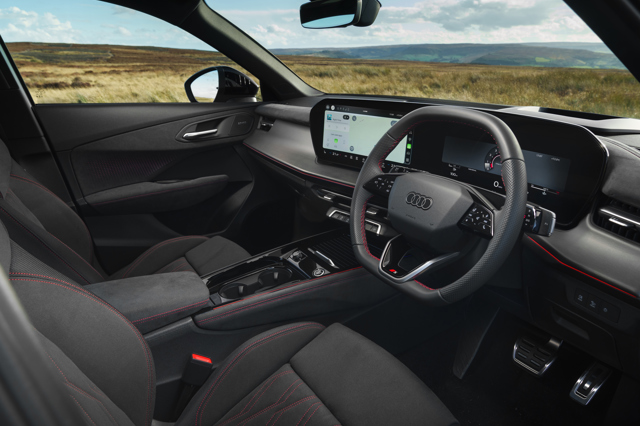
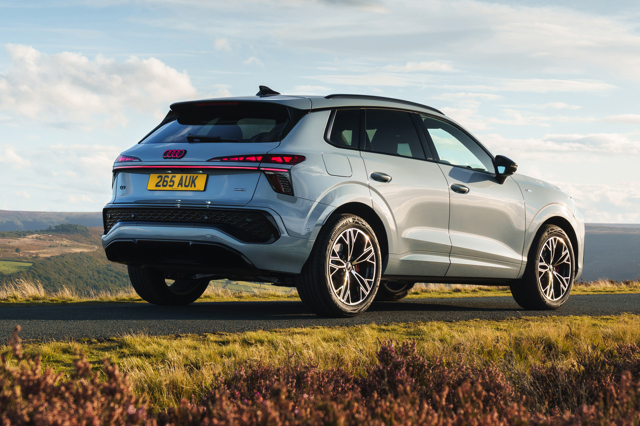
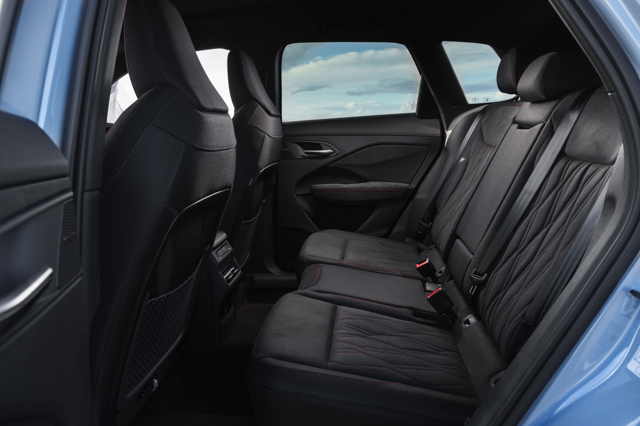
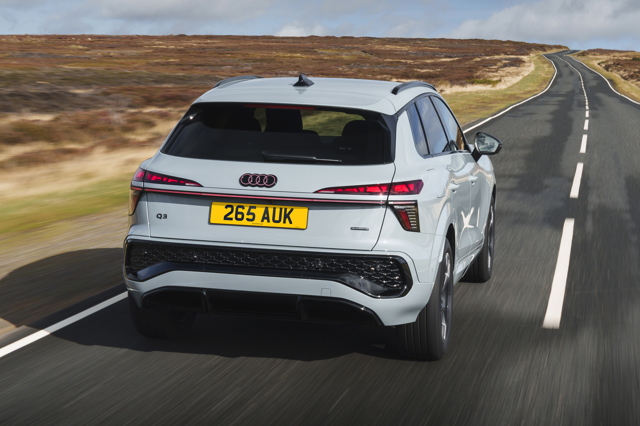
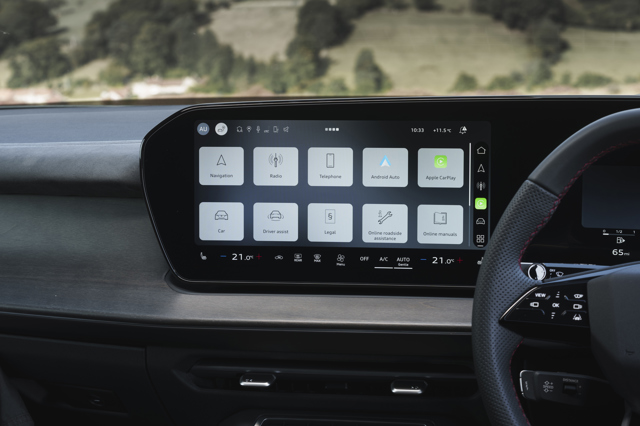
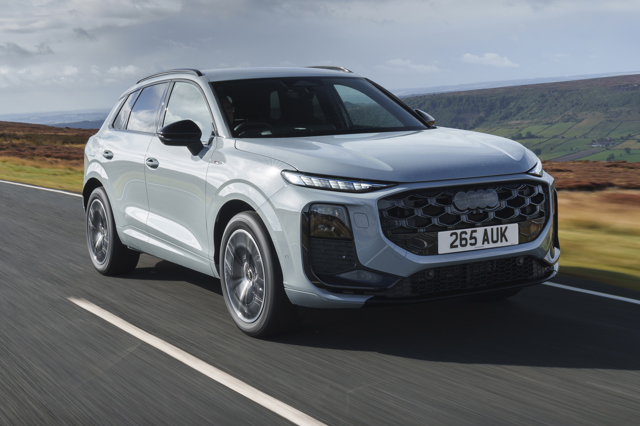
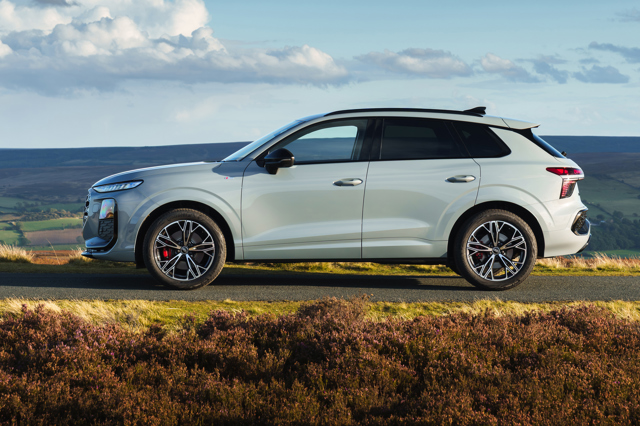
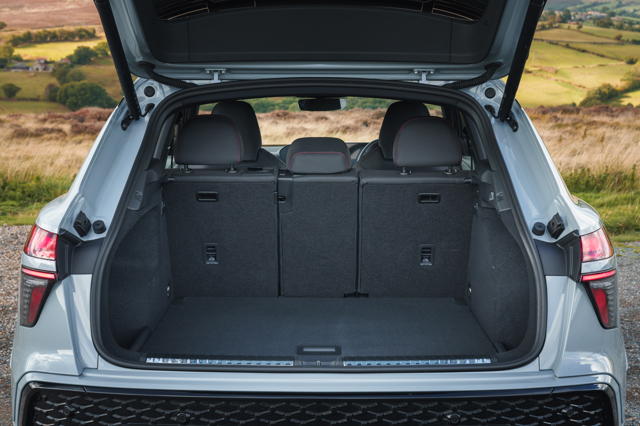
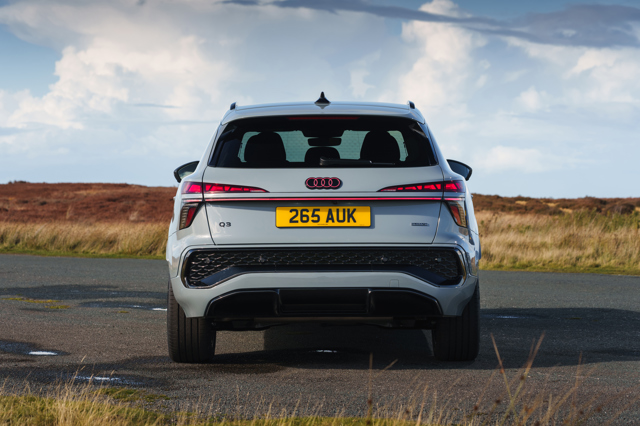


 Strong range of engines. Premium image. Flexible interior with individually sliding rear seats.
Strong range of engines. Premium image. Flexible interior with individually sliding rear seats.
 Less boot space than before. Interior feels cheap in places. Disappointingly firm ride.
Less boot space than before. Interior feels cheap in places. Disappointingly firm ride.
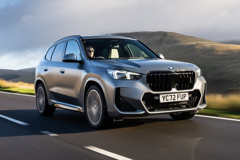

.jpg?width=240&height=160&rmode=crop)

